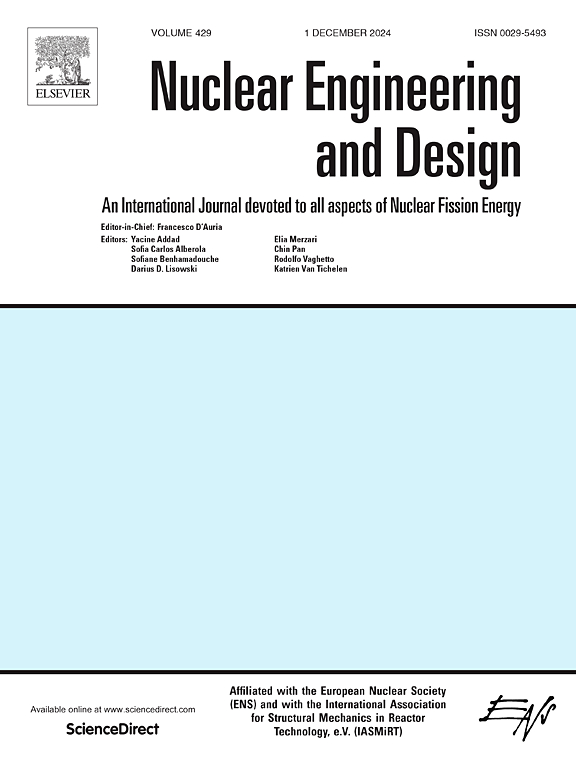The effect of incorporating Cs, Sr and Eu nitrates on the matrix development of Fe-rich polymers
IF 1.9
3区 工程技术
Q1 NUCLEAR SCIENCE & TECHNOLOGY
引用次数: 0
Abstract
Radionuclides like 137Cs, 90Sr and 152+154Eu need to be immobilised from liquid radioactive waste to a suitable final encapsulation matrix. Alkali-activated Materials (AAMs) have the potential to be more effective in immobilising Cs+ and Sr2+ than Portland cement because they can produce stable phases and incorporate them into their structure. Less explored in AAMs is their capacity to immobilise Eu-ions. Nanoparticles are investigated for extracting radionuclides from liquid radioactive waste. CeO2 nanoparticles have exhibited great potential in their ability to sorb Eu3+ but after several adsorption/desorption cycles also these need to be immobilised into a final encapsulation matrix. In this work, AAMs were prepared from synthetic Fe-rich slag. Two sodium silicate ratios were examined and the AAMs were doped with various mixtures of CsNO3, Sr(NO3)2, Eu(NO3)3, and CeO2 nanoparticles. Contaminants added to the AAM matrices can change the properties of the encapsulation system. To understand the impact on the AAM structure and to determine whether the effects are derived from the simulated radioactive Cs+, Sr2+, and Eu3+, the presence of the CeO2 nanoparticles or the presence of the nitrate ions, samples were examined during their matrix development using isothermal calorimetry, and investigations were made on their microstructural and physicochemical characteristics. The introduction of Cs+ to the matrix showed no notable impact on the activation kinetics, but Eu3+ seems to form Eu(OH)3 similarly to Sr2+ which forms Sr(OH)2 reducing the available hydroxides during the activation and ultimately hindering the polymerisation.

求助全文
约1分钟内获得全文
求助全文
来源期刊

Nuclear Engineering and Design
工程技术-核科学技术
CiteScore
3.40
自引率
11.80%
发文量
377
审稿时长
5 months
期刊介绍:
Nuclear Engineering and Design covers the wide range of disciplines involved in the engineering, design, safety and construction of nuclear fission reactors. The Editors welcome papers both on applied and innovative aspects and developments in nuclear science and technology.
Fundamentals of Reactor Design include:
• Thermal-Hydraulics and Core Physics
• Safety Analysis, Risk Assessment (PSA)
• Structural and Mechanical Engineering
• Materials Science
• Fuel Behavior and Design
• Structural Plant Design
• Engineering of Reactor Components
• Experiments
Aspects beyond fundamentals of Reactor Design covered:
• Accident Mitigation Measures
• Reactor Control Systems
• Licensing Issues
• Safeguard Engineering
• Economy of Plants
• Reprocessing / Waste Disposal
• Applications of Nuclear Energy
• Maintenance
• Decommissioning
Papers on new reactor ideas and developments (Generation IV reactors) such as inherently safe modular HTRs, High Performance LWRs/HWRs and LMFBs/GFR will be considered; Actinide Burners, Accelerator Driven Systems, Energy Amplifiers and other special designs of power and research reactors and their applications are also encouraged.
 求助内容:
求助内容: 应助结果提醒方式:
应助结果提醒方式:


